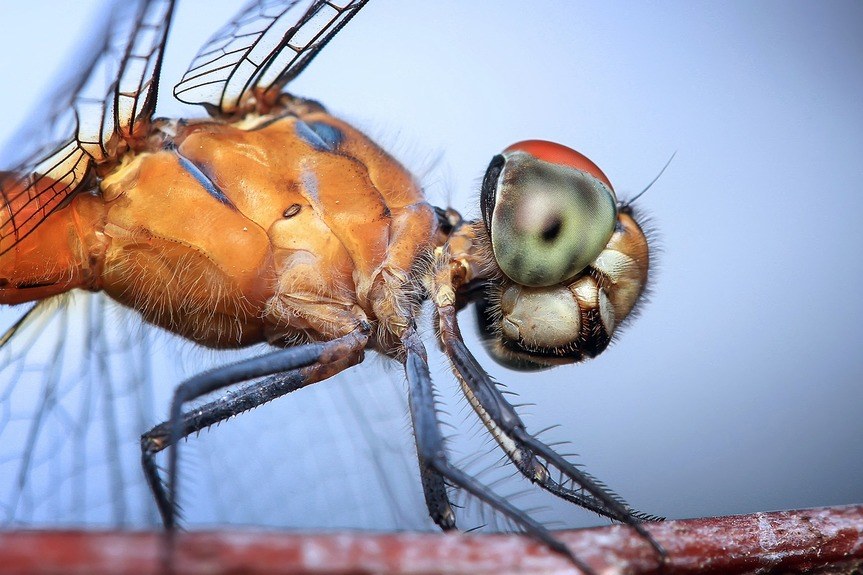Dragonflies are fascinating yet challenging photography subjects. They zip and speed around a pond, constantly in motion. And with their excellent vision, they are far too wary to let people get close enough for a good portrait. So how to take photographs of dragonflies?
Go out in the morning
Dragonflies are at their least active in the early morning. Still cold from the night and covered in morning dew, they are much easier to approach as they warm themselves in the sun or wait for the shadows to disappear. I find it easiest to shoot dragonflies at this time. The natural light qualities of the Golden Hour also give a warm glow to any photography done an hour after sunrise.

#1. Watch and learn their patterns
Dragonflies are territorial creatures. They will stick to a very narrow portion of a pond, and when they stray, other dragonflies are quick to chase them off. Dragonflies also tend to choose particular branches or plants as perches to survey their kingdoms from.
So what the savvy photographer can do is set up a camera with a tripod and remote control directly in front of a perch and then step back. The dragonfly will eventually return. And using the remote shutter (or a remote control app for a smartphone), I can capture a picture without scaring off the dragonfly.
This setup also allows me to use macro lenses without fear. Unlike most lenses, macro lenses are optimized for maximum sharpness and clarity at their closest zoom settings. With a good macro lens, you can capture the incredibly fine details of a dragonfly’s compound eyes, powerful mandibles, and hairy thorax. Covered in dew in the early morning, the results will often be stunning.

#2. Use a zoom lens
When it’s noon and the dragonflies are too wary to let you get near, a zoom lens may be your only choice. Any lens with a changing focal length is a zoom lens; but how much zoom do I need?
I want as much as I can afford while understanding the drawbacks of high zoom lenses. Unless you’re spending $1000 or more, zoom lenses tend to have somewhat high maximum apertures, like f/4.0. This means I won’t be getting as much light as possible at maximum zoom, so I’ll need to keep an eye on shutter speed and ISO.
If I’m shooting dragonflies in flight, then a high shutter speed is needed. But combined with the higher aperture of a moderate priced zoom lens, I may end up with underexposed photographs. So it’s important to adjust ISO or use exposure compensation to ensure my photos are exposed properly.
Dragonflies at rest are much easier to shoot, especially with a zoom lens. They are incredibly still until they burst into motion again. So when I have a moment like this, I turn down my shutter speed, to allow as much natural light as possible.
Conclusion
Dragonflies are some of the more challenging wildlife subjects to photograph. They rarely sit still, but it’s not impossible to catch them in a moment of rest. All they take is a little more time and attention to their habits. And sometimes a bit of luck.